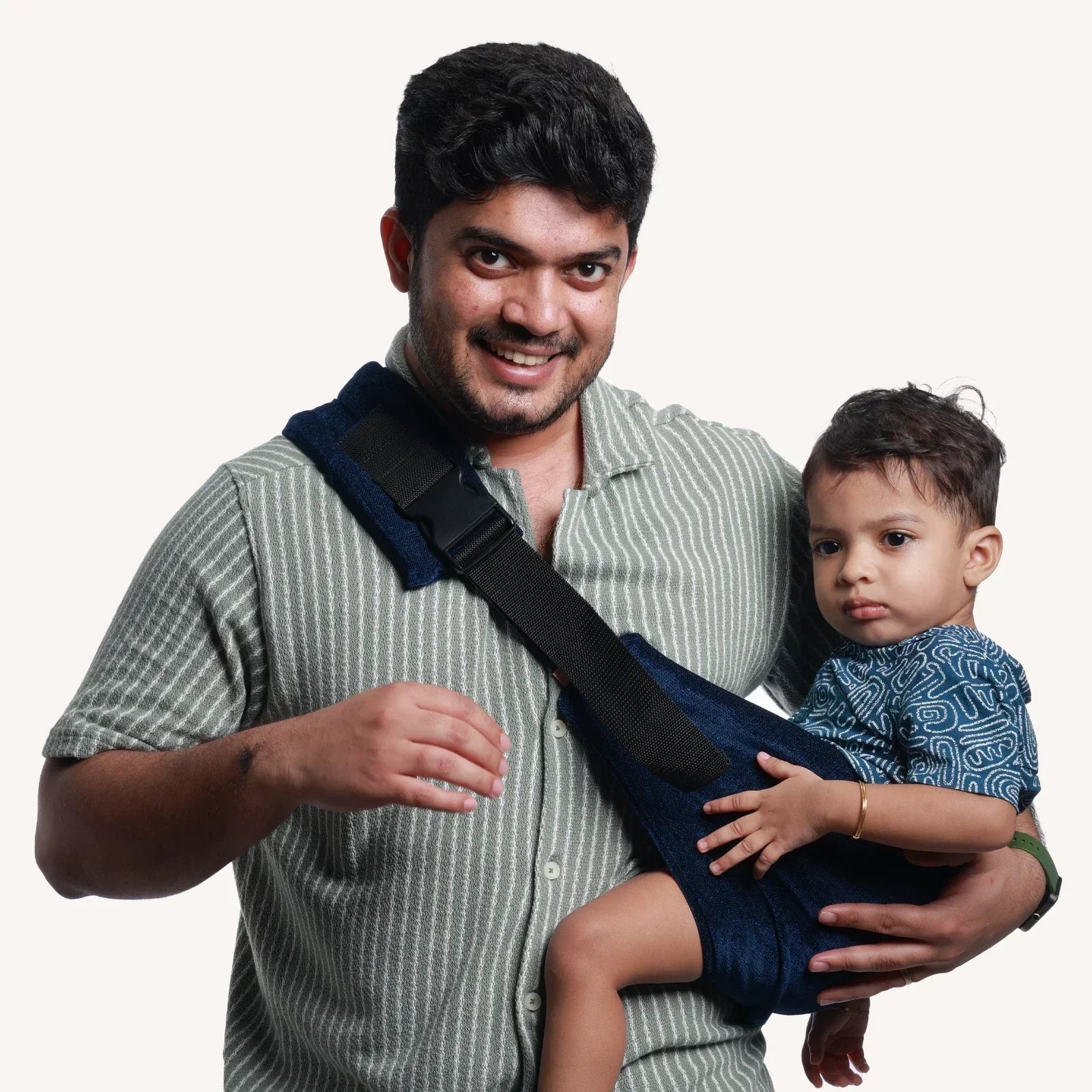Parenting means lots of cuddles—and lots of carrying. If you're already using a toddler carrier, you understand how essential comfort truly is. Whether calming your child at home or heading out for errands, your carrier should feel like support, not strain.
While many parents begin with a standard front-facing carrier, it often falls short as your baby grows. That's where the sideways ergonomic toddler carrier becomes a real game-changer. It's more than a trend—it's a smart shift toward better comfort, posture, and safety for both parent and child.
Let's explore why switching to a sideways carrier might be your most practical upgrade.
Why Choose a Sideways Toddler Carrier?
Natural Weight Distribution: Sideways carriers are designed to shift your child's weight evenly across your torso, especially your hips. This takes pressure off your shoulders and spine, making them ideal for long walks or daily routines.
Perfect for Growing Toddlers: A sideways ergonomic carrier provides support and comfort as your child grows (typically 25–60 lbs). It adapts to their size, reducing awkward dangling or back strain.
Hip-Healthy Support: Sideways carrying naturally promotes the recommended M-position, where knees are higher than the bum. This is vital for proper hip development, especially for active toddlers.
Hands-Free Comfort: Need to multitask? A sideways toddler carrier gives your arms a break without compromising your child's security.
Features That Make a Sideways Carrier Worth It
Here's what to look for when picking the best sideways ergonomic toddler carrier:
- Wide, Padded Shoulder Straps: Prevents digging and soreness
- Adjustable Fit: Ensures comfort for both mom and dad
- Breathable Fabric: Keeps both of you cool, even in warm weather
- Multiple Positions: Switch between side, front, and back as needed
- Quick Buckles & Easy Adjustments: Fast transitions for busy days
Popular Sideways Toddler Carrier Styles
Not all carriers are the same. Here are a few popular styles with sideways functionality:
🔹 Soft-Structured Carriers (SSC): Ergonomic and supportive, SSCs can easily adjust into a sideways or hip-carry position, perfect for long or short wear.
🔹 Hip Seat Carriers: Built with a sturdy seat that rests on your hip. These are great for side-carrying toddlers during quick outings or fussy moments.
🔹 Wraps & Slings: Flexible and breathable, wraps and slings allow a natural side-carry hold—ideal for in-home soothing or short errands.
What to Avoid When Choosing a Carrier
Your child's safety and comfort come first. Stay away from carriers with:
Thin shoulder straps with no support
- Non-adjustable components
- Tight leg openings that dangle legs
- No lumbar or waist support
- Overly hot and non-breathable fabric
Always choose a tested toddler sling or sideways carrier with ergonomic design principles.
Climate-Friendly Carrier Choices
Choose a carrier that fits your environment:
- For Warm Climates: Use mesh panels, moisture-wicking fabric, and lightweight cotton or bamboo.
- For Cold Climates: Choose carriers with insulation or compatibility with winter babywearing jackets.
Sideways carriers are often more ventilated and easier to pair with seasonal clothing, making them versatile year-round.
Designed for Moms & Dads
Today's sideways carriers are made for every body type. If you and your partner plan to share the load, look for:
✔ Unisex designs
✔ Quick-adjust sizing options
✔ Comfortable fit for different heights and builds
Parenting is a team sport—comfort shouldn't be one-sided.
How to Care for Your Sideways Carrier
To ensure your carrier lasts:
- Follow wash instructions (machine wash or hand wash as advised)
- Always air dry (avoid tumble drying)
- Check seams, straps, and buckles regularly
- Store it in a dry, dust-free space
- Stick to the weight limit for safety
With proper care, your sideways carrier can serve through toddlerhood and even your next child!
What Real Parents Say
Reading reviews from parents who've tried the sideways style can guide your decision. Focus on:
- All-day comfort reports
- Durability over months or years
- Support for the lower back
- Toddler cooperation (do they enjoy it?)
- Ease of wearing solo
A sideways ergonomic toddler carrier should integrate effortlessly into your life.
Daily Babywearing Tips for Sideways Carriers
Even the best carrier needs smart usage. Keep these pro tips in mind:
✔ Wear High on the Waist: Better hip-level balance, less shoulder tension
✔ Support Baby's Legs: Ensure the M-position for healthy hips
✔ Take Breaks: Listen to your body—switch arms or positions
✔ Switch Carry Styles: Use front, hip, or back carry to reduce fatigue
Final Thoughts: Switch to a Sideways Carrier for a Happier Parenting Journey
If you've outgrown your infant carrier or are struggling with comfort, a sideways ergonomic toddler carrier is your next essential upgrade. It's more than convenience—it's a pathway to smoother daily routines, safer babywearing, and less backache.
👉 Ready to make the switch? Explore our top picks and start experiencing the comfort of sideways babywearing today.


Share:
Choosing the Right Baby Carrier in India: Safe, Breathable, and Eco-Friendly Options for Every Parent